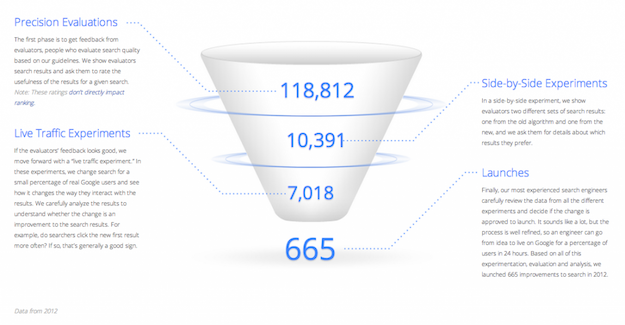
Figure 1: Graphic depicting process for testing and implementing changes to Google’s search algorithms. (“Algorithms,” n.d.) [Click to enlarge]
In a simplified form, PageRank prioritizes pages with many links from pages with many links. The algorithm was initially conceived as a way of identifying high-quality websites within search results. For any given search string, quality is defined by PageRank by determining the number of incoming links to a page from other pages with many incoming links. However, unlike the academic publications that constitute the medium for citation networks, the Internet is easily expandable and reconfigurable. Because Google does not create the web links it relies on, the effect of this optimization was to make those links a form of currency and therefore to (inadvertently) encourage user-based manipulation of those links specifically for the purpose of affecting PageRank (and any other link-based rating system).
PageRank, of course, is not the sole determining factor of ranking within searches on Google. PageRank is one small piece of that network, but a piece that established the initial program—that links should be counted as a quality judgment about a web site. Once the network was programmed in this way, it became necessary for Google to modify their algorithms—665 changes were made to their search algorithms in 2012 (Fig. 1; “Algorithms,” 2014)—to maintain the integrity of that program. In this way, PageRank remains a central feature of the Google network’s program, even if it does not represent the sum of the network’s algorithmic processes.
In short, PageRank did more than simply determine quality via links, it programmed an alternative version of the Web—its proprietary database—that valued links as votes for website quality and this act fundamentally changed linking behaviors within the wider Web. Counting incoming links as a measure of quality made those links a commodity, one that was solely in the control of web users. While I cannot easily raise the prominence of an academic paper by publishing my own journal and filling it with citations to that paper, I can do this on the Internet. Web-centric behaviors like link-farms (“Link farm,” n.d.) and link spamming (“Spam in blogs,” n.d.), where the creators of web content would generate links between websites in order to artificially increase their PageRank or otherwise game link-based quality systems like it. An entire industry has arisen around addressing other features of search engines, known as search engine optimization (SEO) (cf. Spinuzzi, 2009). The orientation of this writing towards the quality guidelines of the network are further evidence of its programming of the network as a whole.
The specific effects of programming and switching within a network like the Google-managed, Google-programmed Web are crucial to the crafting of effective writing and rhetoric within that network. Therefore, the program of a network and the methods of switching what it privileges constitute one crucial contingency that writers must account for in crafting their texts. The perfect argument that is buried on the 100th page of a Google search has less chance of being effective than one on the first page. Because of this reality, writers must not only appeal to or attempt to persuade their target audience, but they must also persuade the network itself of the worth of their appeal. As Astrid Mager (2012) wrote in her analysis of the search engine optimization (SEO) industry, websites are “carefully…adapted to search algorithms,” as writers purposefully “desig[n] their sites” to “please search engines” (p. 777).
Writing and rhetoric scholars are familiar with this type of networked writing represented by SEO and link farms. However, the writing that leads to the creation of networks that affect the creation and dissemination of this networked writing has received much less attention. I have argued elsewhere (Jones, 2014) that the writing that occurs on more limited networks—such as the friend-and-follower networks on social media sites—are also influenced by programming and switching. In the same way that Google has programmed a sub-network of the wider Web (albeit an incredibly large and influential one), sub-networks (and sub-sub-networks) of that network or any other network also conform to the properties of network-making power: programming and switching. Effective programming and switching practices, then, should be understood as foundational aspects of rhetorical practice within networks.
Note: Portions of this text are adapted from Jones (2012).
